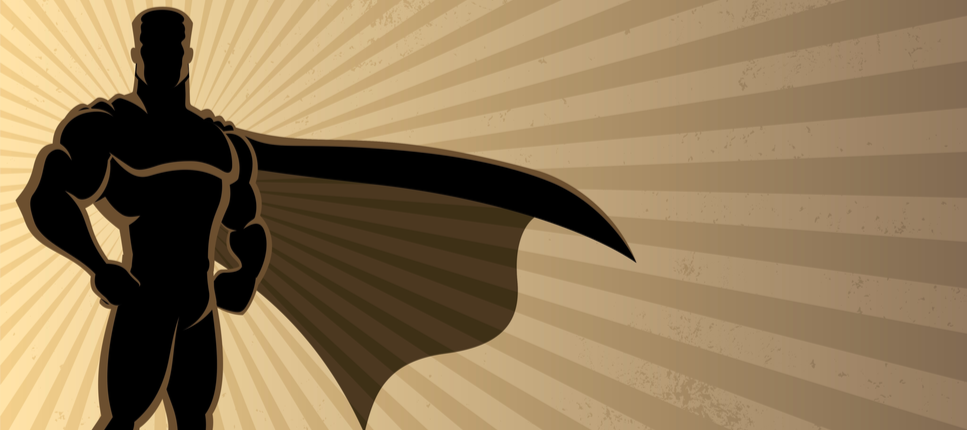Superheroes speak to learners of all ages in a way they identify with. Even if you are not a fan of the genre, you still know who The Man of Steel is and what he stands for when fighting against evil and foe. For comic books readers, these heroes fight for a better world. For publishers, these heroes fight over a territory mainly divided by two industry giants: DC Comics and Marvel. For education, these heroes can “fight” for our learners by making references, metaphors, humour, and can make heavy content accessible in a way not many other fantasy characters can do. That’s because few other characters have joined the masses of multiple generations the way comic book superheroes have. To better conceptualize the application of such superheroes to education, let’s further explore Superman and what he could represent for learners.
What Does Superman Stand For?
Comic books can be traced back to prehistoric cave drawings, but if we travel less far in the past, the mainstream North American comic book appeared at the beginning of the 20th century. While the story of the origins of comic books varies from country to country, in North America, the great depression (from late 1929 until about 1939) was a perfect inspiration for the rise of a new hero culture. “The first stories were crude but direct. Unlike most newspaper heroes, Superman lived in the same world as his readers. […] A metropolis of lynch mobs and wife beaters, where politicians were crooks, where businessmen exploited workers and started wars in South America. It was the real world of 1938. A world in need of a hero! (Comic Book Superheroes Unmasked, 2003)”. Nowadays, “a world in need of a hero” has a similar meaning, and even though the details of the times are different, Superman can still be used to discuss topics as important as inclusion, immigration, and justice. Why not use characters with such deep overall meaning to build Learning about history, culture and ethics, amongst other topics?
Superhero…like the rest of us
Regardless of the interpretation, we give to the Man of Steel, he is there to discuss real issues and find solutions no one else can bring to fruition. Since their beginnings, comic books have been the outlet to discuss political, financial and social difficulties, but they also provide a great deal of entertainment via satire. To have the last man of Krypton walk amongst us, the only thing required is a pair of glasses that allows him to become our endearing, incognito, alter ego Clark Kent. Who hasn’t made that reflection before: How come Lois Lane doesn’t see right through that ruse? But most importantly, why does a man that can fly waste his time becoming one of us, having a regular job as a journalist for the Daily Planet? People that knew the creators of the character, two young Jewish men, American writer Jerry Siegel and Canadian-born American artist Joe Shuster, compare the character’s long-lost planet of origin to the Jewish Europe that was also destroyed (Comic book superheroes unmasked, 2003). The man with the cape is then often described as an orphan and an immigrant, longing for a place that he can finally call home. And while he is an alien who wears a skinsuit for protection and power-boosting, he is like everyone else, looking to belong. It is easy to identify with his concerns.
Adapting Our Superheroes to The Right Timelines
Back then, the superhero cult pushed more and more people to read comic books. Readers of all ages were interested in the media, as characters often had many layers, timelines were often complex and numerous, but mostly: topics were relevant to the times. Authors used current issues and personal experiences, making stories more meaningful and believable. It is no surprise then that Mark Waid wrote about his task to “re-imagine Superman for the twenty-first century” (Morris & Morris, 2005, p4.). This strategy of connecting the average reader to the content is also very often seen in Learning where an audience analysis allows one to identify the target profile of the learner and adapt the content to its interests, fashion, beliefs, era, etc. Building for the right audience is no easy task, but that task has been accomplished in the comic books world with the various versions of Superman available. Imagine a Communication class analyzing those various versions of Superman according to their times and audiences. All this hard work of character adaptation can serve as a revealing exploration of our current and past times.
Comic Book Heroes Providing That Extra Hook to Learn
Comic book heroes have so much to offer with their complex ramifications, concerns, and timelines that it would be a waste not to use them to reference various topics included in our curriculums. Superheroes can be used to reverse-engineer information out of them about cultural, historical, and social contexts. Fun facts about our favourite characters can also lead to further reflections and discussions on different difficulties and concerns. So much information about our heroes and their targeted timelines with associated agendas and missions are available out there that they can serve multiple topics at once and provide the hook necessary to reach a number of generations, whether a reader of the genre or not. Everyone knows who the Man of Steel is and how he landed on Earth. As such, our heroes become good metaphors and/or allegories to all sorts of teachings, messages, and sensitive, deep topics, otherwise more difficult to introduce. And these heroes can be adapted or focused on a number of pedagogical topics. So why not use them to provide that extra motivation to learn?
Some references:
-
Comic Book Superheroes Unmasked.
-
Secret Origin: The Story of DC Comics.
-
Superman: The Unauthorized Biography, by Glen Weldon. Wiley; 1st edition (April 4, 2013)
-
Is Superman Circumcised? The Complete Jewish History of the World’s Greatest Hero, by Roy Schwartz. McFarland & Company (May 5, 2021)
-
Superman: The High-Flying History of America’s Most Enduring Hero, by Larry Tye. Random House Publishing Group (2013)
Related articles:
- The 3 Speeds of Thought
- Metacognition 101
- Metacognition in 3 Questions
- Develop Your Metacognitive Skills
- The importance of emotions in learning
- Dealing with uncertainty in 3 steps
- Neuroscience: Learning in 4 Steps
- Education through the lens of neuroscience
- 7 myths about learning, debunked by neuroscience
- The adult brain learns best with stories
- Deciphering Attention
- Attention, in numbers
- Learning and Forgetting: New Perspectives on the Brain
- 8 Types of Memory… to Remember!
- The fascinating brain: 5 amazing facts





